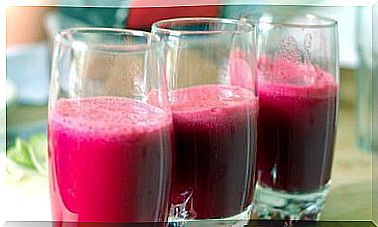Fibromyalgia And Nutrition – Is There A Connection?
Fibromyalgia is characterized by diffuse pain that plagues those affected throughout their lives. Does diet have anything to do with it?

Fibromyalgia is a disease that often takes a real marathon from doctor to doctor, diagnosis to diagnosis and examination to examination. Again and again, those affected report that a change in diet could help them. So today we are looking into the relationship between fibromyalgia and diet .
Fibromyalgia and Diet
Fibromyalgia is a pain characterized disease. The cause of the disease is still unknown to this day.
Many of those affected take years to be properly diagnosed. Symptoms can only be relieved after a diagnosis has been made.
Diet could be one option, as symptoms of irritable bowel syndrome with repeated abdominal pain and episodes of cramps, diarrhea, or constipation are common in fibromyalgia.
Symptoms of irritable bowel syndrome with repeated abdominal pain and episodes with diarrhea or constipation are also not uncommon.
Irritable stomach and irritable bladder are also symptoms, but they do not always have to be present. Those affected report that the following nutrition tips helped them:

Avoid foods containing gluten
Gluten is often equated with “gluten,” although this is not entirely true.
Correctly, gluten is the name for a certain mixture of proteins, i.e. proteins, carbohydrates and fats.
This mixture of substances ensures that flour turns into a sticky mass when combined with water. If cereals contain gluten, they can be used to bake higher baked goods such as bread in the form of a loaf of bread or high-rise rolls and cakes.
The dough can “rise” with yeast or other raising agents without losing its structure.
Only flat baked goods such as flatbread can be baked from grain with little or no gluten. Gluten is therefore not harmful, it is naturally contained in a high proportion in the following types of grain:
- Spelt
- wheat
- Kamut
- Emmer
- Einkorn
- Durum wheat
Those who suffer from gluten intolerance cannot tolerate this protein mixture.
This leads to inflammation of the small intestinal mucosa in those affected. The disease is also called celiac disease and there is no cure.
However, it is possible to avoid foods containing gluten. Especially since more and more such products have been offered in stores.
The symptoms in the digestive tract of people with fibromyalgia are similar to those of celiac disease, which is why it might be worth trying to avoid foods containing gluten even if you have fibromyalgia.

Avoid lactose
Lactose is a so-called disaccharide and is also called milk sugar.
It occurs in milk and the products processed from it in different concentrations.
Fresh cow’s milk has a lactose content of approx. 5 g / 100 ml.
When processing cow’s milk, depending on the water content, some or all of the lactose ends up in the product.
In the case of lactose intolerance, there is a disorder of lactose digestion, which can lead to more or less pronounced symptoms.
Lactose itself cannot be absorbed by the body in the intestine. In order to be absorbed and utilized, it must first be split into its individual components, glucose and galactose, in the intestine.
This breakdown is done by an enzyme made by cells in the lining of the small intestine called lactase.
This enzyme is lacking in people who suffer from lactose intolerance. The milk sugar cannot be digested.
Symptoms include gas, increased wind loss (flatulence), abdominal pain / cramps and diarrhea. In particular, Asians and Africans, whose ancestors did not operate dairy farming, cannot tolerate milk.
Dairy farming has a long tradition in Europe. Over the generations, the body has adapted to lifelong milk consumption.
In Germany, around 20 percent of the population suffer from lactose intolerance, and the number of unreported cases is high. It could be that the indigestion in fibromyalgia can also be traced back to a lactose intolerance. Try it!

Avoid milk protein
People who are allergic to cow’s milk may be allergic to two different types of milk protein, either casein or whey protein.
Depending on which type of protein triggers an allergic reaction in the person affected, you can consume certain dairy products, or you have to do without dairy products entirely.
All milk protein is contained in drinking milk, buttermilk, sour milk, yoghurt and kefir, whereas quark or cheese contain almost only casein.
During cheese production, the casein is curdled, the whey protein remains in the whey and is separated off.
The whey protein is specific to cow’s milk, ie an allergic reaction to whey protein is limited to cow’s milk. The allergy sufferer therefore has the option of switching to goat, sheep or mare’s milk. It is worth trying to reduce symptoms of fibromyalgia!

Avoid animal proteins
In general, all animal fats contain arachidonic acid, a messenger substance that promotes inflammation in the human body. It therefore makes sense to avoid animal fats in any inflammatory reaction.
This includes all fatty dairy products, eggs and meat products. Give it a try , it will do your body good, even if you do not suffer from fibromyalgia!









